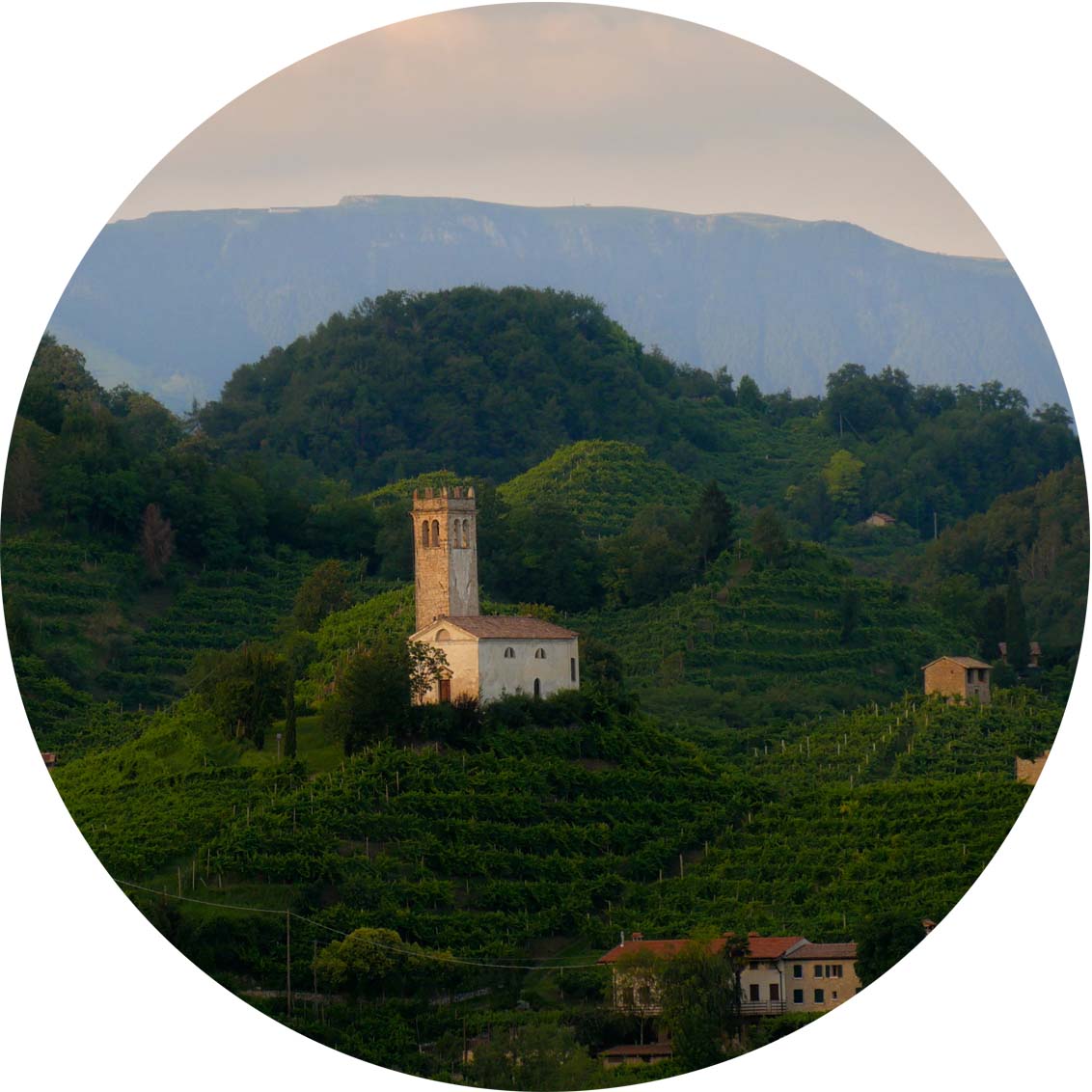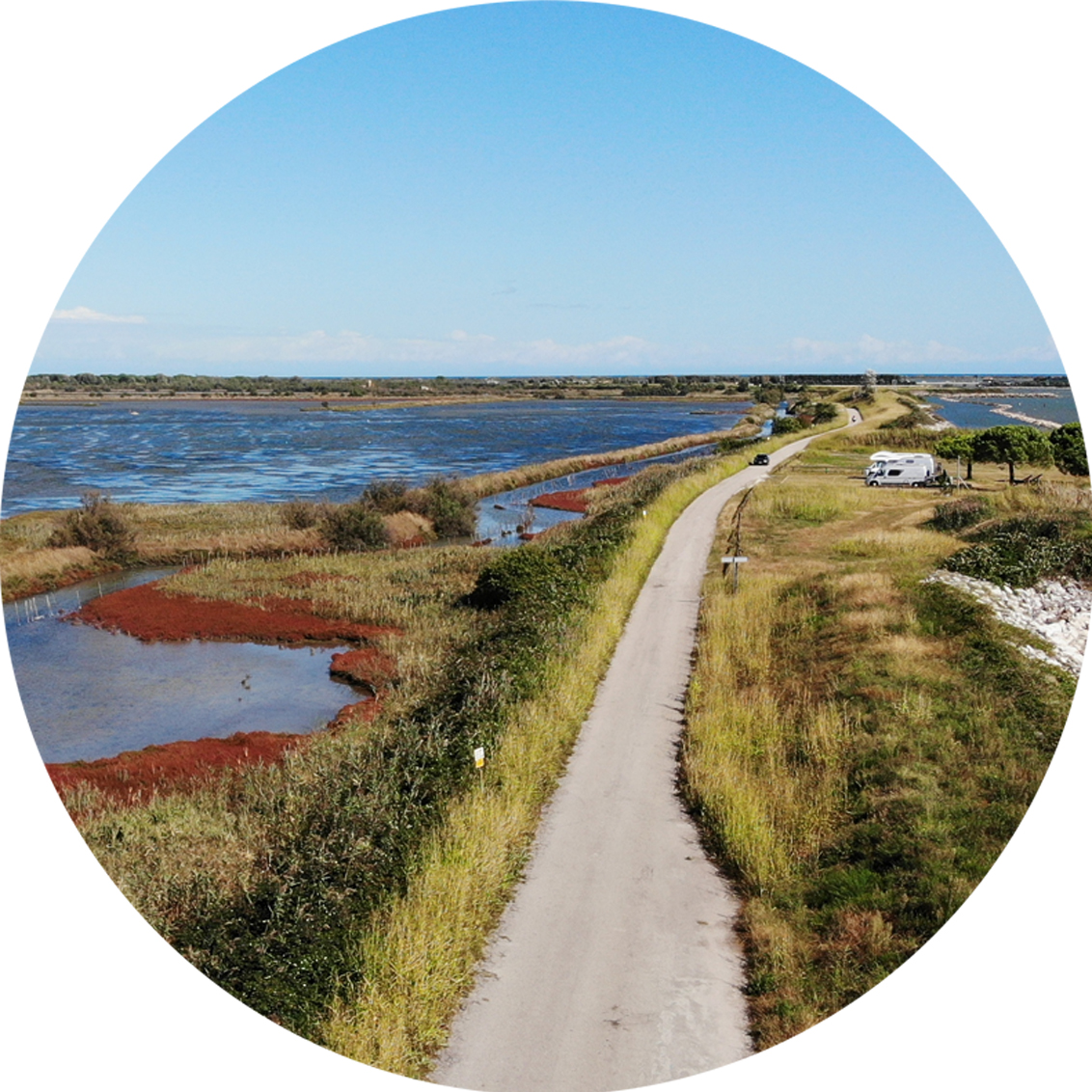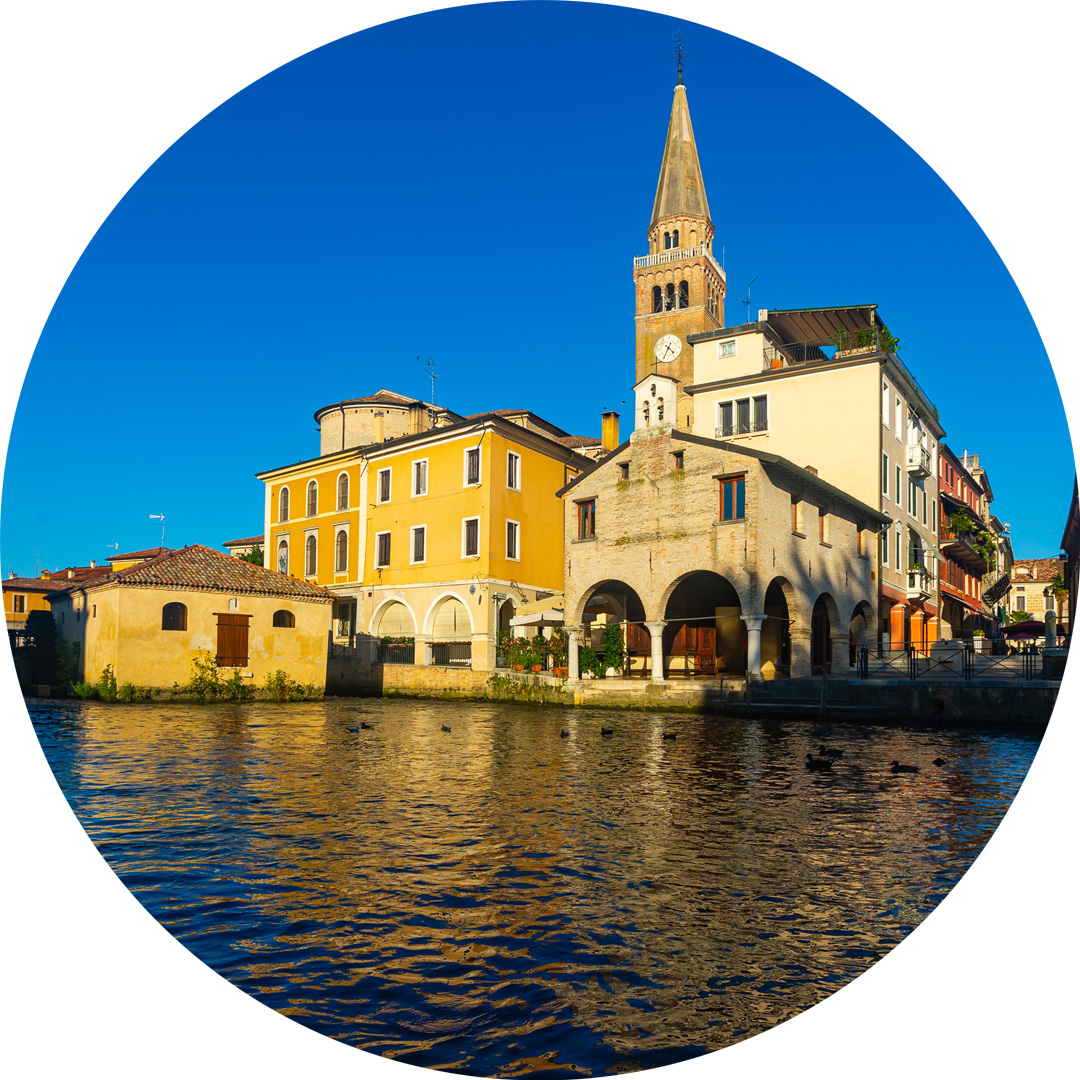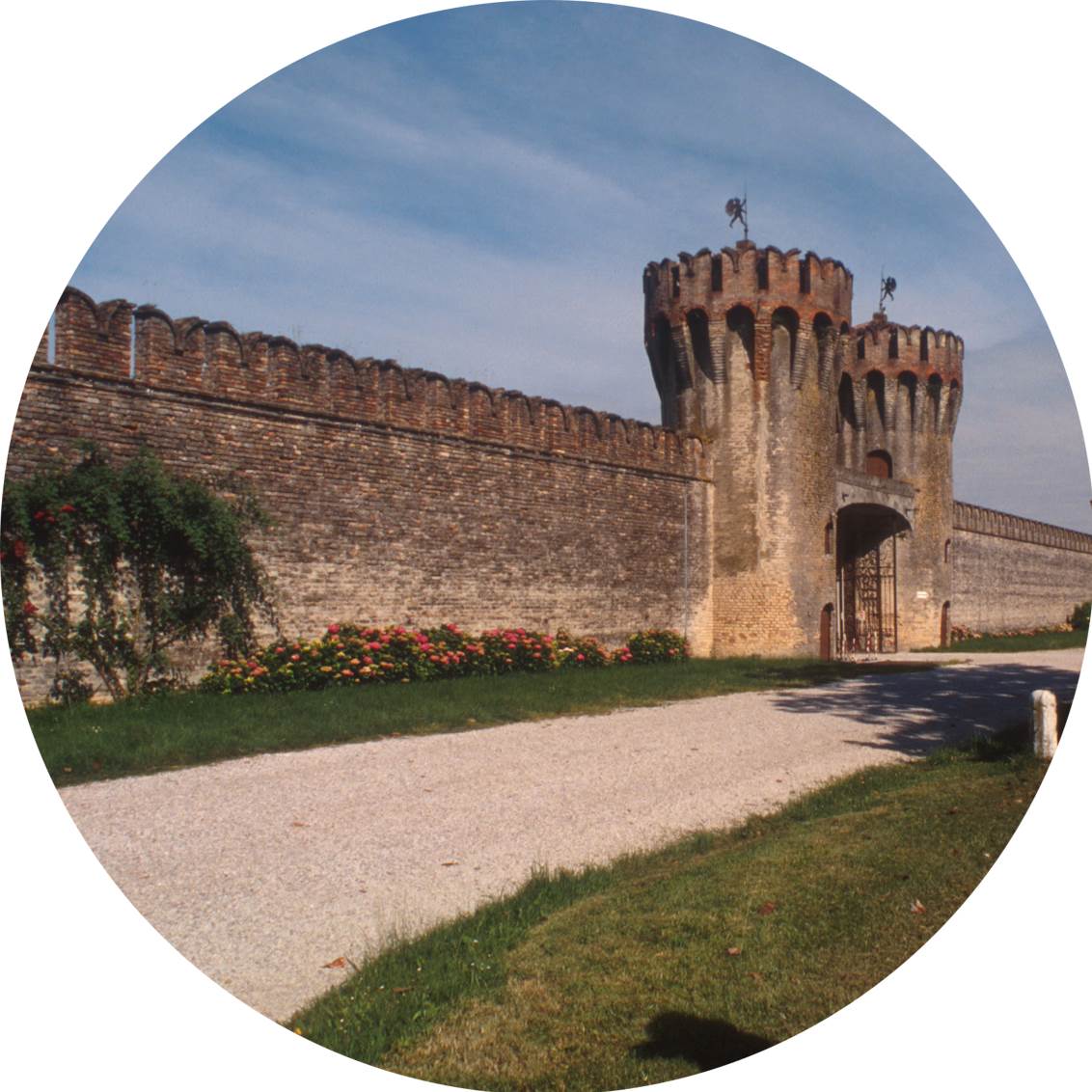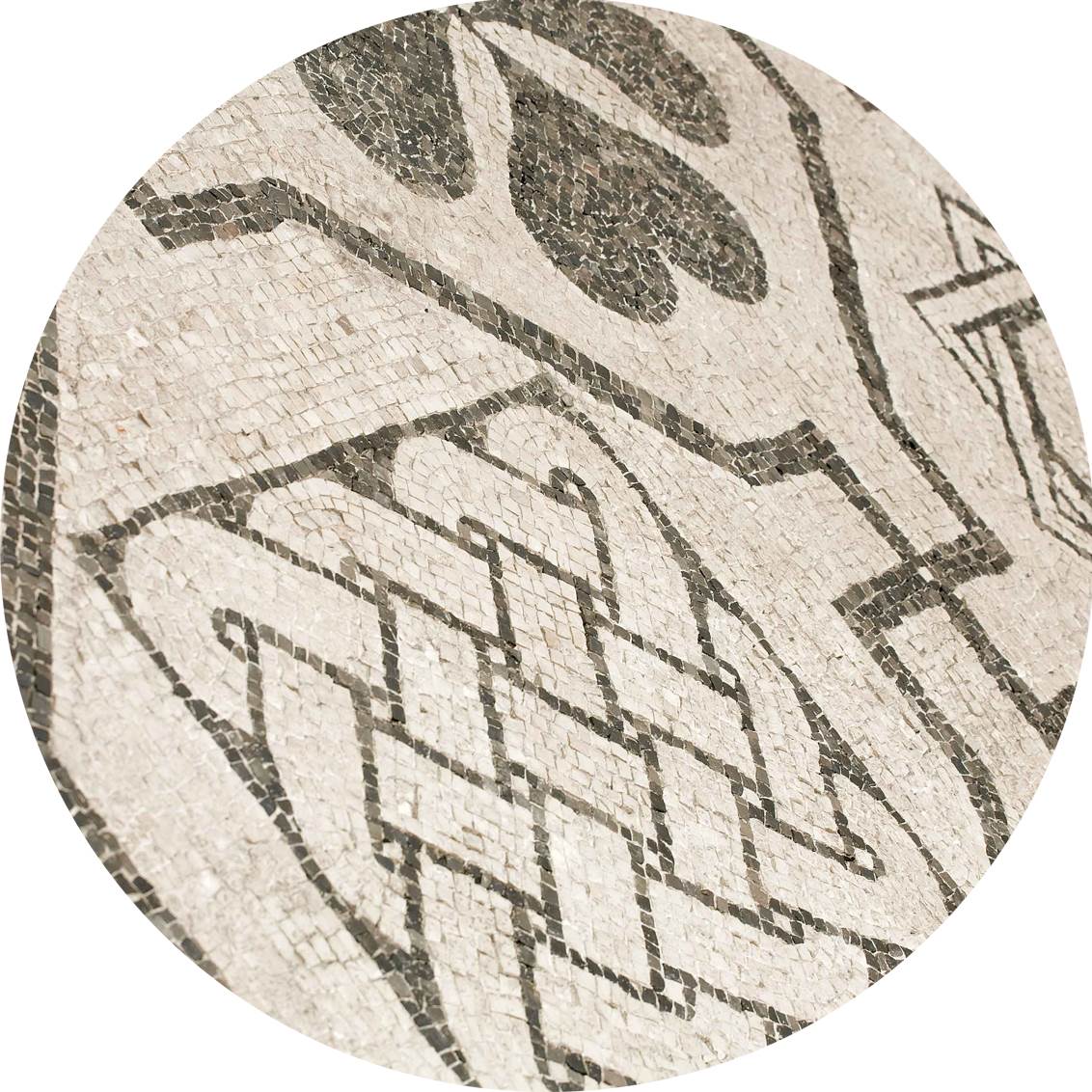Made up of the green countryside and hills of the Veneto region, the Lower Piave lands nestle amongst the Prosecco vineyards to the tune of the Piave waters, the echo of the Great War and of the tales told by Hemingway. Adorned with patrician villas and set amongst cities of art, the Venice Lagoon, the Adriatic Sea and the majestic Dolomites, this area borders Friuli-Venezia Giulia, and is influenced by its Central-European atmospheres and food and wine specialities.

Though they may be understated and far from sensational, some universes have something special. Universes where history was made, shaped by people who wished to live there. Universes which, centuries later, still embody the soul of this area. All this can be said of the Lower Piave lands, characterised by the reclaimed landscapes spanned by the winding Piave River, whose bends paint a green-hued checkerboard dotted with lonely bell towers or opulent villas built by the Venetian aristocracy. This industrious area was razed to the ground by World War I bombings (the Piave was the front line between the Italian and Austro-Hungarian armies) and then rebuilt – just like Noventa itself, which carries the idea of “new” (from the Latin “novo”) in its very name. A small-scale, liveable countryside where we can start breathing in the lagoon air, dotted with two-storey houses built on flat land. One of the main attractions is tasting its specialities in its many osterie, such as rice with poénta e schìe (polenta and freshwater shrimps) and white asparagus. For dessert, typical holiday cakes known in local dialect as fugazza or pinza. Local food can pair with walnut liqueur, Conegliano and Valdobbiadene Prosecco or Piave DOC wines. Marked to the west by the Sile River, with Noventa di Piave at its centre, the boundary of the valley at the Piave’s end stretches towards the sea, between Jesolo and Eraclea. Just a few km away, we find the unrivalled beauty of Venice and its archipelago, with the nature walks offered by the Cavallino Treporti tourist park.

In this valley, time seems to have stood still and daily life enjoys a lazy rhythm. All over the place we find ancient small harbours and wooden mooring piers, like the so-called Tajo in Musile di Piave or the 1920s bridge in Caposile – one of the only two remaining outrigger bridges to connect the banks of the Piave. These are the lands where Ernest Hemingway, who called himself a “boy of the Lower Piave”, volunteered for the American Red Cross during the war, an experience that left him with 227 shrapnel fragments in his body and inspired the novel A Farewell to Arms (1929).
Dedicated to him are the foundation stone of the Baptistery of the Boys of ’99 (the birth year of the youths who enlisted in the army) and the Hemingway Itinerary in Fossalta di Piave. Immersed in a refreshing silence, this 11-km pedestrian and cycle loop along the riverbed is indescribably beautiful.
To describe these feelings, we can turn to the words of the other writers and poets for whom these places represented a sort of opportunity as well as an inspiration. Indeed, the Piave River (called “il Piave” or “la Piave” in Italian, because the local dialect uses the feminine), which flows for 220 km from Mount Peralba to the Adriatic Sea, is the birthplace of the artist Titian and author Dino Buzzati (from Belluno). Its waters also offered refuge to the poet Andrea Zanzotto and writer Mauro Corona. The Piave River was written about by the authors Giovanni Comisso and Goffredo Parise (a native of Vicenza) who, after travelling the world, decided to put down roots on the banks of the Piave, in Salgareda. He purchased a “relitto di casa” (“a house in ruins”), a sort of barn “in quel piccolo Eden profumato di sambuco” (“in that tiny, elder-scented Eden”). His so-called little pink house is open to visitors today as is his house museum in Ponte di Piave. Another native of Noventa is Giacomo Noventa (pseudonym of Giacomo Ca’ Zorzi). Born there in 1898, this philosopher, politician and, above all, poet, owned the beautiful, Palladio-inspired Villa Ca’ Zorzi, which is still owned privately.

All this to say that Noventa, despite being outside the main tourist circuit, has a fascinating history of its own. And though much of it was swept away by the war, traces remain in the stones of the buildings that have since been rebuilt. For example, in the 1920s manor houses of the wealthy Venetian merchants, or in the church of San Mauro Martire, successor of the parish church destroyed in 1917. An archaeological site with a Roman, Medieval and Renaissance complex was found in this area – a sample of the more substantial and renowned archaeological area of Altino, with its National Archaeological Museum, which lies about 20 km from Noventa.
And just beyond this area, we’re spoiled for choice with the must-see cities of art of the Veneto region: Venice, Padua, Vicenza, Verona. Furthermore, tiny gems such as Asolo, or the Palladian villas dotting the landscape along the rivers, or the grandeur of the Dolomites, with their stunningly unique intersection of rocks, glaciers, forests and lakes. Even Hemingway, upon his post-war return to Veneto and the Piave area, used to venture all the way up there. He would drive upriver in his royal-blue Buick towards his beloved Cortina, enjoying the trip with the wind on his face and a pipe in his mouth, finally immersing himself in the enchanted silence of the mountains. This is where he wrote Across the River and Under the Trees (1950), and who knows what he would have written if he had travelled on towards the border with the Trentino-Alto Adige region, reaching the Sagrada Familia of the Dolomites: the Tre Cime di Lavaredo, amongst the most iconic and beloved of the Alpine peaks.
Still beyond – on the Italian border or at the heart of Central Italy, depending on your point of view – lies Friuli-Venezia Giulia. This region stands out for its marked naturalistic features and gems such as the towns of Udine and Palmanova, and the nostalgic atmosphere imbuing the historic cafes of Trieste. This fascinating city, influenced by the surrounding Balkans and Austria, is a cultural melting pot – a crossroads of peoples, religions and food and wine specialities.
in partnership with ![]()
Itinerary
Eat & Stay
Are you planning a visit to Noventa di Piave? Here you will find a selection of hotels and facilities to make your trip even more memorable.
Discover more
Read next



